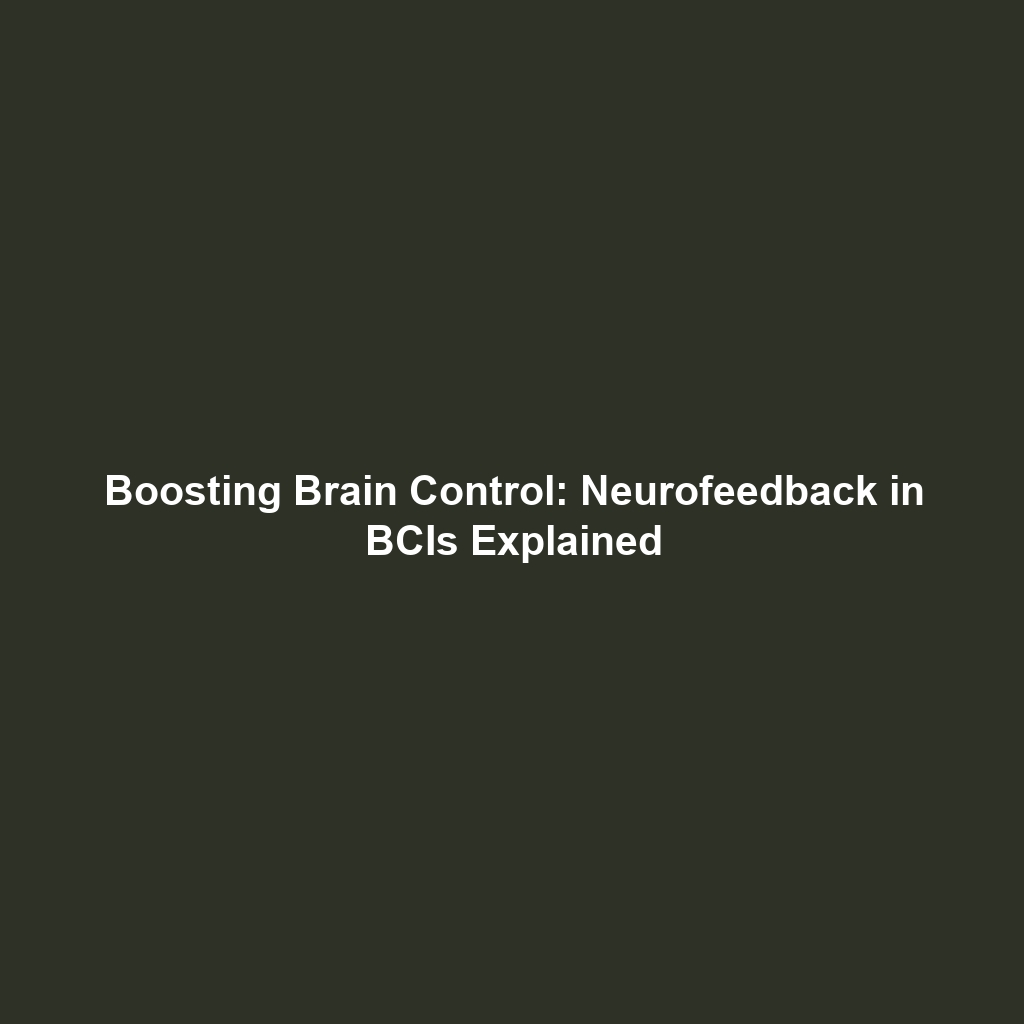<>
Feedback Systems in Brain-Computer Interfaces
Introduction
In the rapidly evolving realm of Brain-Computer Interfaces (BCIs), feedback systems utilizing neurofeedback have emerged as vital tools for users seeking to modulate their brain activity effectively. By providing real-time feedback, these systems empower individuals to enhance their cognitive control, thereby enabling applications ranging from neurorehabilitation to mental health management. The significance of feedback systems extends beyond mere technology; it represents a transformative approach that bridges the gap between human cognition and machine functionality.
Key Concepts
Neurofeedback Basics
Neurofeedback is a specific form of biofeedback that allows individuals to gain awareness of and self-regulate their brain activity. By monitoring brainwave patterns through electroencephalography (EEG), users receive informative feedback which encourages desired cognitive states. Such systems incorporate algorithms that interpret brain signals and translate them into actionable insights.
Integration in BCIs
Within Brain-Computer Interfaces, feedback systems play a crucial role, enhancing user engagement and interaction. They provide dynamic adjustments based on the user’s performance, resulting in improved learning curves and control accuracy. This integration ensures that the user remains an active participant in the BCI, creating a feedback loop that fosters continued improvement.
Applications and Real-World Uses
Feedback systems leveraging neurofeedback are revolutionizing various fields. Here are significant applications:
- Neurorehabilitation: BCIs using neurofeedback are employed in recovery programs for stroke patients, enabling them to regain motor functions by practicing targeted movements through brain engagement.
- Mental Health: Applications in therapy involve training individuals to self-regulate anxiety and depression through real-time feedback on their brain activity.
- Gaming and Entertainment: Innovative gaming platforms integrate BCIs to allow players to influence game dynamics through their mental states, showcasing the potential for engaging entertainment experiences.
Current Challenges
While feedback systems in BCIs offer numerous advantages, several challenges persist:
- Technical Limitations: The accuracy of EEG measurements can vary significantly due to environmental factors and individual differences.
- User Training: Effectively utilizing neurofeedback requires a learning curve, which can be daunting for some users.
- Data Interpretation: Analytical challenges in interpreting real-time data can hinder the development of generalized protocols for widespread clinical applications.
Future Research and Innovations
Advancements in feedback systems are on the horizon, focusing on potential breakthroughs:
- AI Integration: The incorporation of artificial intelligence in interpretation mechanisms may enhance user experience by providing personalized feedback predictions.
- Wearable Technology: Research into more accessible and comfortable wearable EEG devices is underway to facilitate broader applications in everyday life.
- Enhanced Protocols: Developing standard protocols for various mental health disorders could make neurofeedback therapy a mainstream treatment modality.
Conclusion
Feedback systems utilizing neurofeedback are reshaping our understanding and interaction with Brain-Computer Interfaces. The potential applications across rehabilitation, mental health, and entertainment highlight just a fraction of what is achievable. As research progresses, the promise of these technologies could lead to even greater innovations and effectiveness in BCI applications. For further exploration of this topic, consider reading more on real-world examples and future directions in Brain-Computer Interfaces.
